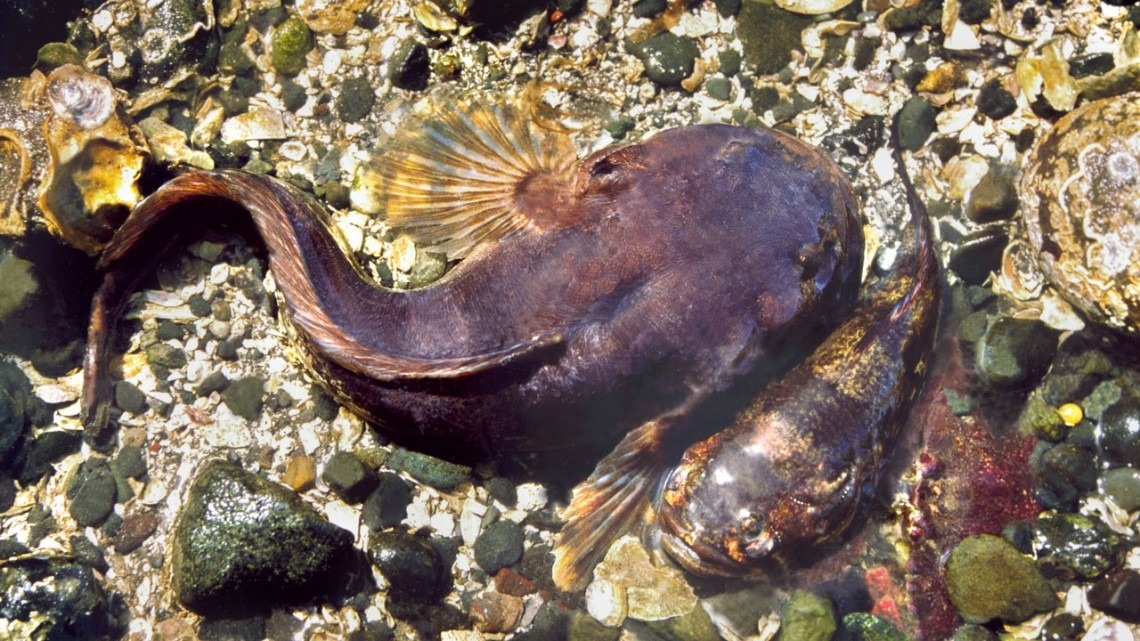Talkative midshipman fish also referred to as “California singing fish,” rely heavily on the midbrain to initiate and organize the trains of sounds necessary for vocal communication.
 A male midshipman fish, left, and a female swim in shallow Northern California waters. Their midbrain plays a key role in initiating and patterning trains of sounds used in vocal communication. Image Credit: Margaret A. Marchaterre
A male midshipman fish, left, and a female swim in shallow Northern California waters. Their midbrain plays a key role in initiating and patterning trains of sounds used in vocal communication. Image Credit: Margaret A. Marchaterre
An interesting model for how mammals and other vertebrates, including humans, regulate their vocal expressions may be found in the midbrain of these fish, according to Cornell behavioral research that was published on January 2nd, 2024, in Nature Communications.
We have the evidence to show how that this part of the brain, the midbrain, is important to voice signaling. It’s a brain region shared by all vertebrates, whether we are discussing a fish, a bird, or a person, and is crucial to sound patterning and selection.”
Andrew H. Bass, Senior Author and Horace White Professor, Department of Neurobiology and Behavior, Cornell University
According to Bass, when the males of the midshipman fish phrasing seek mates or repel enemies, they emit grunts, growls, and hums. The hum may appear to the human ear as a single note on a foghorn or French horn. Midshipman fish spend the fall and winter deep offshore in Northern California and the Pacific Northwest, but in the late spring and summer, the fish migrate to shallow intertidal zones to spawn.
The fish look after hundreds of unhatched eggs that develop into free-swimming fry under rock shelters.
The steady, conversational hum of a male midshipman fish chorus is reported by those sitting along the shore at high tide on a quiet summer night.
Although it is well known that mammals and other vertebrates vocalize and emit sound to communicate, little is known about the midbrain’s role in initiating acoustic features, such as the patterned hums of these fish or the formation of coherent sentences in humans.
The research was led by Eric R. Schuppe, a Postdoctoral Researcher at the University of California, San Francisco, who was previously a Cornell Postdoctoral Researcher in Bass’s laboratory.
Bass, Schuppe, and other lab participants discovered that the male fish’s periaqueductal gray neurons in the midbrain fire in specific patterns when they defend their nests, mate, and make courtship calls.
The team established that the periaqueductal gray neurons exhibit patterning in other types of calls and evoke output to the muscles controlling sound and the vocal aspects of courtship.
Communication signals patterned by the midbrain “have frequency and amplitude components, and the fish string together sounds in different ways. Maybe those sounds mean aggression or serve as a mating function - like trying to attract a mate to a nest, which male midshipman do with their hum.”
Andrew H. Bass, Senior Author and Horace White Professor, Department of Neurobiology and Behavior, Cornell University
Bass added that the human brain is in the shape of a helmet and the midbrain sits at the top of the brain’s “stem.” Fish brains are shaped more like a tube – making them a more accessible model to study experimentally.
Our findings now show that fish and mammals share functionally comparable periaqueductal gray nodes that can influence the acoustic structure of social context-specific vocal signals.”
Andrew H. Bass, Senior Author and Horace White Professor, Department of Neurobiology and Behavior, Cornell University
According to Bass, these findings offer insights into the consequences of damage to the human midbrain. He proposed that this research could aid in the comprehension of how a human midbrain malfunction could cause someone to become silent or uncommunicative.
Bass notes. “It is only been in the past few years, where the midbrain has gotten more attention from neuroscientists studying social communication. It is a major node connected to your cortex, basal ganglia, amygdala, and hypothalamus. In this way it acts as a gateway for these sources of executive functions to reach other brain regions more directly activating muscles that underlie behavioral actions.”
Bass says, “The midbrain is an amazing part of the brain because it points to how essential it is – if you are a vertebrate – to have the ability to produce sound communication signals. Period.”
Source:
Journal reference:
Schuppe, R. E., et al. (2024). Midbrain node for context-specific vocalisation in fish. Nature Communications. doi/s41467-023-43794-y